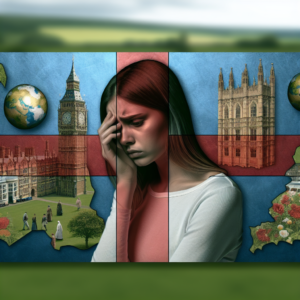Unveiling the Harsh Reality: Domestic Violence in Our Backyards
Introduction
Domestic violence is a serious issue that affects millions of individuals and families around the world. With the rise of social media and awareness campaigns, this once-hidden problem is now being discussed more openly and exposed for what it truly is – a crime against humanity that thrives in our backyards. In this article, we will shed light on the harsh reality of domestic violence, exploring its causes, effects, and possible solutions.
Understanding Domestic Violence
Domestic violence refers to any form of violence or abuse that occurs within a domestic setting, including intimate partner violence, child abuse, and elder abuse. Contrary to popular belief, it is not restricted to physical violence alone; it also encompasses emotional, psychological, sexual, and financial abuse. Domestic violence can occur in any social, economic, or cultural context, affecting people regardless of their age, gender, religion, or social status.
Causes of Domestic Violence
While domestic violence can be influenced by various factors, such as stress, substance abuse, childhood trauma, and cultural norms, it is essential to understand that there is no single cause that can universally explain why it happens. Instead, it is often the result of a combination of these factors, which can differ from case to case. However, one common element frequently identified in abusive relationships is a power imbalance, where one individual seeks to control and dominate the other through violent means.
The Effects of Domestic Violence
The impact of domestic violence can be far-reaching, affecting the physical, mental, and emotional well-being of the victims. Physical injuries, such as broken bones, bruises, and scars, are only the visible manifestations of the violence experienced. Victims may also suffer from long-lasting psychological trauma, ranging from post-traumatic stress disorder (PTSD), anxiety, and depression to low self-esteem and feelings of worthlessness. Moreover, children who witness domestic violence are often deeply affected, leading to developmental issues, behavioral problems, and an increased likelihood of perpetuating the cycle of abuse in their own relationships.
The Role of Society in Combatting Domestic Violence
Addressing the issue of domestic violence requires a collective effort from all sectors of society. It is not enough to simply sympathize with the victims; proactive measures must be taken to prevent and intervene in these situations. Awareness campaigns, education programs, and community support systems play a crucial role in raising awareness about domestic violence, fostering empathy, and empowering victims to seek help. Additionally, legislative measures, such as stricter laws and policies, are necessary to ensure that perpetrators are held accountable for their actions.
Breaking the Cycle of Abuse
Breaking free from an abusive relationship is a daunting task for victims, as they often face numerous barriers, including fear, financial dependence, and societal prejudice. However, it is essential to provide them with the necessary resources and support networks to enable them to escape their abusive environments. Shelters, counseling services, and legal aid are essential components of a comprehensive support system, allowing victims to rebuild their lives and prevent further harm.
Frequently Asked Questions (FAQs)
Q: How prevalent is domestic violence?
A: Domestic violence is a global issue, affecting millions of people worldwide. However, due to the underreporting nature of the crime, it is challenging to determine its exact prevalence. According to the World Health Organization (WHO), approximately 1 in 3 women worldwide have experienced physical or sexual violence by an intimate partner at some point in their lives.
Q: Can men be victims of domestic violence?
A: Absolutely. While women are disproportionately affected by domestic violence, men can also be victims. However, due to societal perceptions and gender stereotypes, male victims may face additional challenges in seeking help and support.
Q: What can I do if someone I know is experiencing domestic violence?
A: If you suspect someone is experiencing domestic violence, it is crucial to offer support without judgment. Encourage them to confide in you, while respecting their decisions and providing information about available resources, such as helplines, shelters, and counseling services. Be prepared to listen and believe them, as victims often face disbelief and victim-blaming.
Q: How can we prevent domestic violence?
A: Prevention starts with education. By teaching young individuals about healthy relationships, consent, respect, and gender equality, we can break the cycle of violence. Promoting equality and challenging societal norms that perpetuate violence are also vital steps towards preventing domestic violence.
Q: How can I help promote awareness about domestic violence?
A: You can raise awareness about domestic violence in your community by sharing information on social media, participating in local or national campaigns, and supporting organizations that work towards ending domestic violence. Volunteering at shelters or donating resources can also make a significant impact.
Conclusion
Addressing the issue of domestic violence requires collective action, empathy, and a commitment to promoting equality and respect within our society. By unveiling the harsh reality and engaging in open conversations about domestic violence, we can work towards eradicating this crime from our backyards, providing survivors with the support they need to heal and thrive. Together, we can build a future where love and kindness prevail over violence and fear.
















